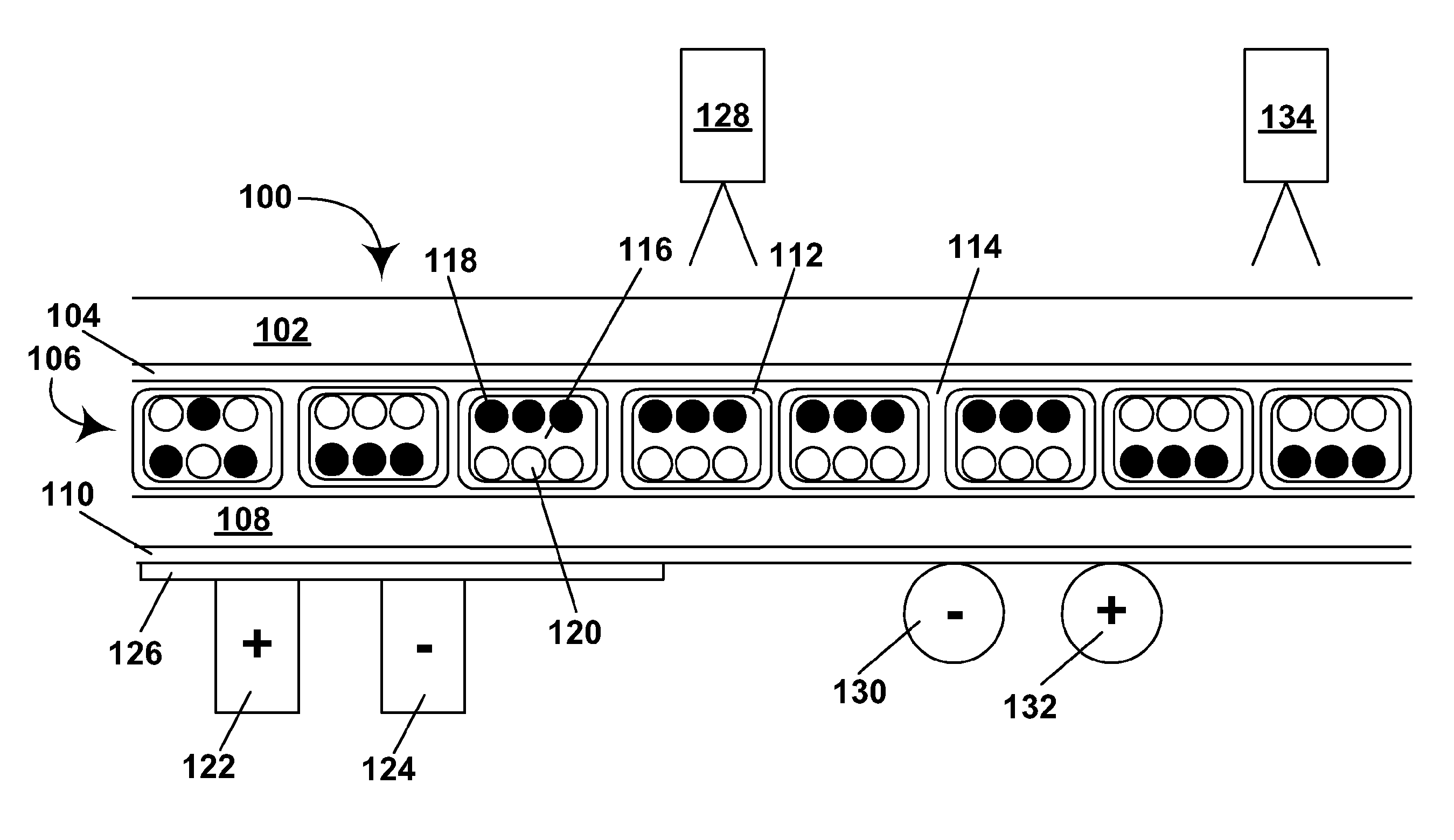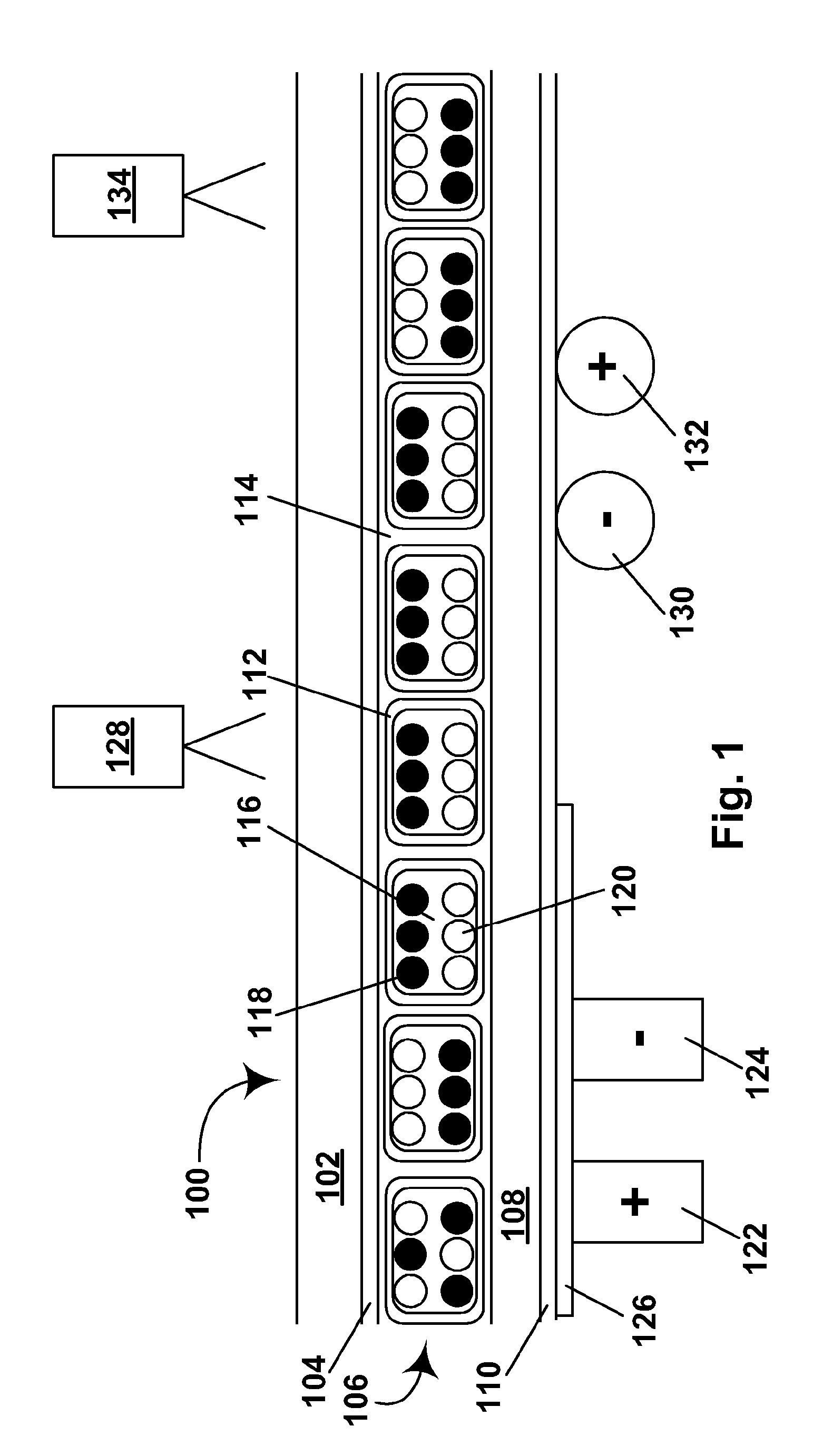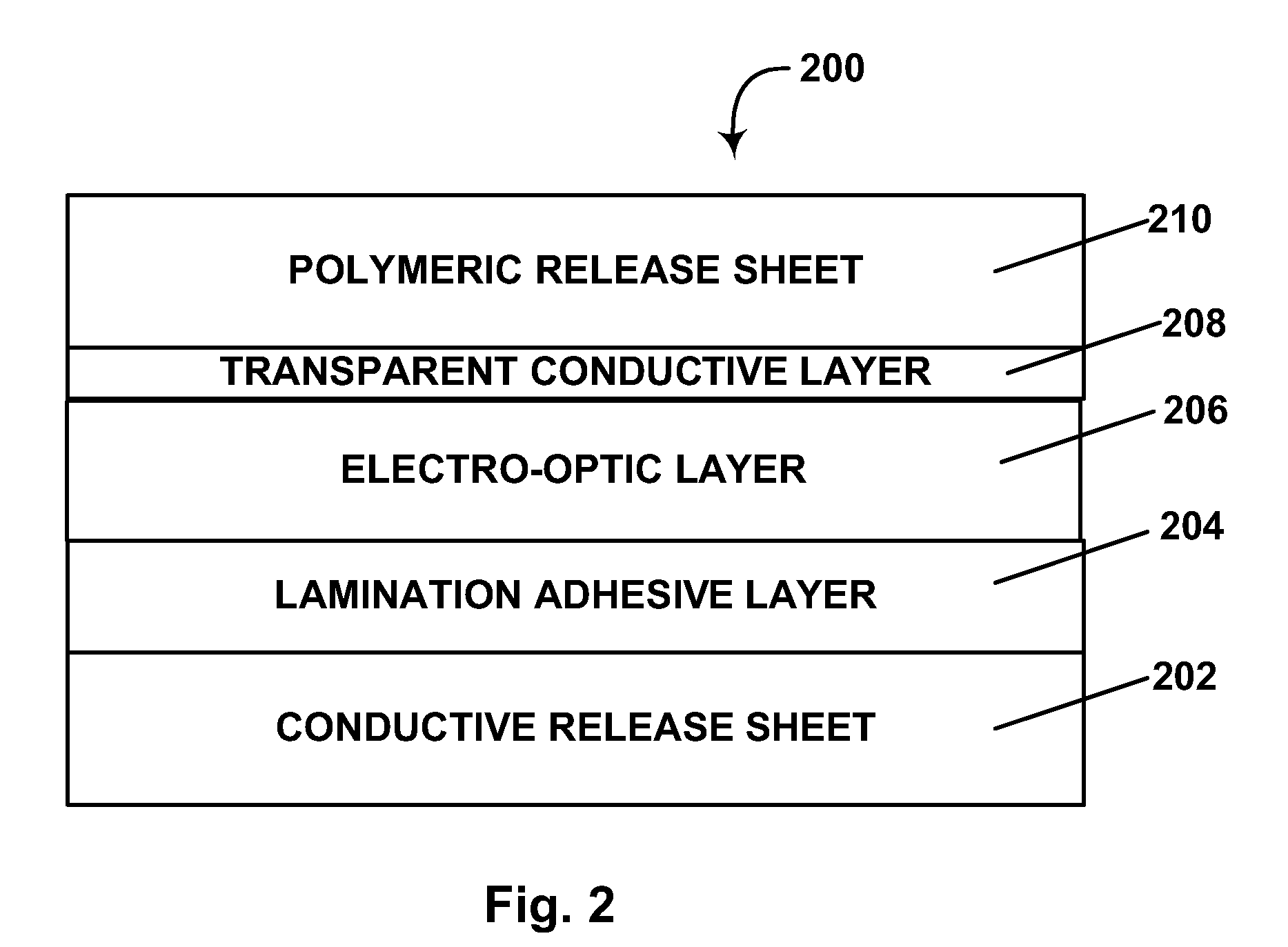Nevertheless, problems with the long-term
image quality of these displays have prevented their widespread usage.
For example, particles that make up electrophoretic displays tend to settle, resulting in inadequate service-life for these displays.
Such gas-based electrophoretic media appear to be susceptible to the same types of problems due to particle
settling as liquid-based electrophoretic media, when the media are used in an orientation which permits such
settling, for example in a sign where the medium is disposed in a
vertical plane.
Indeed, particle
settling appears to be a more serious problem in gas-based electrophoretic media than in liquid-based ones, since the lower
viscosity of gaseous suspending fluids as compared with liquid ones allows more rapid settling of the electrophoretic particles.
Although many of the components used in electro-optic displays, and the methods used for their manufacture, are derived from
liquid crystal displays (LCD's), the LCD
assembly process (which involves flowing
liquid crystal between spaced substrates) cannot be transferred to
solid electro-optic displays, since the solid electro-optic medium must be secured to
layers on both sides and cannot simply be slid between the two surrounding
layers.
Both of these testing methods have disadvantages.
The first method requires an electrically conductive layer in the release sheet, and release sheets provided with such conductive
layers are substantially more expensive than conventional release sheets which lack such conductive layers.
Furthermore, this testing method requires that electrical contact be made with the conductive layer in the release sheet, and although this can readily be done when testing is effected on an isolated piece of front plane laminate (such as the piece clamped in an electrostatic chuck illustrated in the patent—one can simply peel the release sheet away from one corner of the piece to
expose the conductive layer) it may be more difficult to do if is desired to test a front plane laminate in the form of a continuous web.
In addition, the conductive layers on commercial release sheets incorporating such layers are normally opaque, so providing a release sheet with such an opaque conductive layer prevents
visual inspection of one surface of the electro-
optic layer in the front plane laminate during the testing.
The apparatus disclosed in the patent for effecting the second, electrostatic method, namely an ionographic print head, may also present problems.
It may be difficult to provide sufficient electrostatic charge to ensure uniform switching of the electro-optic medium if the electro-optic medium is of a type (for example, an electrochromic medium) which requires substantial current flow for switching, or if the front plane laminate is in the form of a continuous web moving at substantial speed.
The presence of certain optional layers, especially anti-static layers, on the front plane laminate may interfere with the electrostatic method.
Finally, an ionographic print head or similar electrostatic charge application device may be susceptible to
edge effects which may render it difficult to ensure accurate testing of
peripheral portions of a front plane laminate, especially the edges of a broad web of such material.
However, a front plane laminate does have certain limitations.
Since the FPL is normally produced by
coating the electro-
optic layer directly on to a substrate which will eventually form the front
electrode (and typically an associated front protective layer) of the final display), the front
electrode must be a coatable light-transmissive conductor, which restricts the choice of front conductor and protective layer.
For example, some possible protective layers, such as glass or thick plastic layers, may be too thick and stiff to allow
coating of the electro-optic medium, while other possible substrates may be too fragile for this purpose.
Also, since practical
mass production requires that the FPL be produced as a continuous web, waste occurs when portions of the web cannot be used because of the sizes and shapes of FPL pieces used to produce displays.
As the complexity and cost of the substrate to be coated increases, the cost of the substrate can substantially affect the final cost the display.
While in general the use of pre-formed contact pads tends to be more satisfactory, it does have the
disadvantage of reducing flexibility in the manufacturing process; since the location of the contact pads varies with the intended application of the FPL, pre-formed contact pads fix the application in which a particular roll of FPL can be used.
It is difficult to condition an electro-optic medium derived within an FPL after the electro-optic medium has been placed between the front substrate and the lamination
adhesive layer since the materials used for both the front substrate and the lamination
adhesive are typically impervious to
moisture, and this may lead to problems when final display
assembly is conducted in poorly controlled environments.
 Login to View More
Login to View More 


